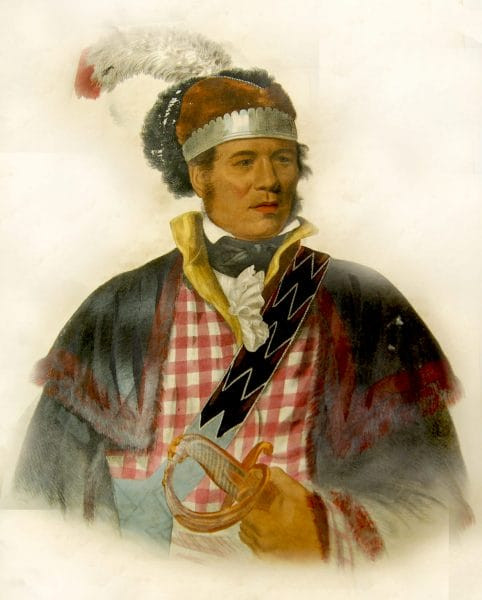The Treaty of Indian Springs, officially known as the Treaty with the Creeks, 1821, marked a significant turning point in the relationship between the Creek Nation and the United States. This agreement involved the cession of the remaining Creek lands in Georgia, east of the Flint River, to the U.S. But Where Was The Treaty Of Indian Springs Signed? This crucial agreement was formalized at a place called Indian Springs, Georgia, on January 8, 1821. This location became the namesake for not just one, but two significant treaties affecting the Creek people.
The treaty negotiations, which commenced in December 1820, took place at an inn owned by William McIntosh, a prominent Lower Creek headman, right in Indian Springs. These discussions brought together representatives from the U.S. federal government, the state of Georgia, and over twenty Creek leaders, primarily led by McIntosh and Tustunnugee Hopoie, also known as Little Prince. The objectives of these talks were multifaceted and reflected the differing interests of the parties involved. Georgia sought to acquire land in the northern part of the state to create a buffer between the Creeks and Cherokees, aiming to prevent potential alliances. Furthermore, Georgia aimed to settle substantial, and likely exaggerated, unpaid claims against the Creeks, amounting to around $350,000, stemming from decades of trade transactions. The U.S. commissioners also aimed to secure land and persuade the Creeks inhabiting the ceded territories to relocate west of the Mississippi River. One proposition suggested offering land to the Creeks in the Quapaw Cession, situated in northern Louisiana and the Arkansas Territory, land previously ceded by the Quapaw and recently allocated to the Choctaws. Adding another layer of complexity, Georgia commissioners also pressed the Creeks to honor previous treaty terms, demanding the return of property, including runaway slaves and horses, to their owners. McIntosh, representing the Creek perspective, defended his people against these accusations, pointing out that many of the escaped enslaved individuals were not residing among the Creeks. He also advocated for leniency for those in debt.
 William McIntosh, a Lower Creek headman who played a key role in the Treaty of Indian Springs negotiations, portrait.
William McIntosh, a Lower Creek headman who played a key role in the Treaty of Indian Springs negotiations, portrait.
Despite the pressures, the Creek representatives stood firm against ceding land that would create a border with the Cherokees and resisted the proposal of westward relocation. However, they did concede to relinquishing a significant tract of land. This area was bordered by the Flint River to the west and the Ocmulgee River to the east, extending northward to an area near present-day Alpharetta, just north of Atlanta. This newly acquired territory was contiguous with land obtained in the First Treaty of Washington and further solidified the security of the Federal Road. This land cession was estimated to encompass over 6,700 square miles, roughly 4.3 million acres. While substantial in size, the Creeks considered this land less vital as white settlement had largely depleted the game in the area. In exchange for this land, the U.S. agreed to pay the Creeks $10,000 immediately upon signing and an additional $40,000 upon ratification of the treaty. Furthermore, the agreement included annual payments of $5,000 for the subsequent two years, $16,000 annually for the next five years, and $10,000 annually for the following six years. The total financial compensation amounted to $200,000, stipulated to be paid over 14 years in cash or goods and farm implements, at the Creeks’ discretion. In a separate agreement, also signed on the same day and titled “Treaty with the Creeks, 1821,” the parties agreed upon a sum of $250,000 to address Creek debts, which the U.S. federal government undertook to pay. However, records indicate that ultimately only about $100,000 was disbursed to Georgia claimants.
William McIntosh, who played a central role in the treaty negotiations on the Creek side, emerged as a primary beneficiary of these financial settlements. He received $40,000 for his assistance in previous agreements, and some accounts suggest he was entrusted with treaty funds to distribute among his supporters, further solidifying his leadership position. The treaty also granted McIntosh 1,000 acres of land surrounding Indian Springs and an additional 640-acre tract near his plantation on the Ocmulgee River. Members of the Bernard family and leader Efau Imathla (Efauemathlaw in treaty documents) also received one-square-mile land tracts, contingent upon their residency on the land.
The repercussions of the First Treaty of Indian Springs were significant. The Creek National Council, deeply concerned by this land cession, resolved to never again sell or barter away their ancestral lands. While they had previously outlawed such actions, the law was suspended for the 1821 treaty. Despite this resolution, in 1825, at the same location of Indian Springs, William McIntosh, along with approximately 50 other Creeks including a few headmen, signed away the remaining Creek lands in Georgia in the Second Treaty of Indian Springs. This subsequent treaty was later declared null and void by the Creek National Council, and McIntosh was sentenced to death and executed for his role in these unauthorized treaty negotiations, highlighting the deeply controversial nature of the agreements signed at Indian Springs. The location of Indian Springs, therefore, is not just a geographical point, but a place deeply intertwined with pivotal and tragic events in Creek history, forever marked by the treaties signed there.
